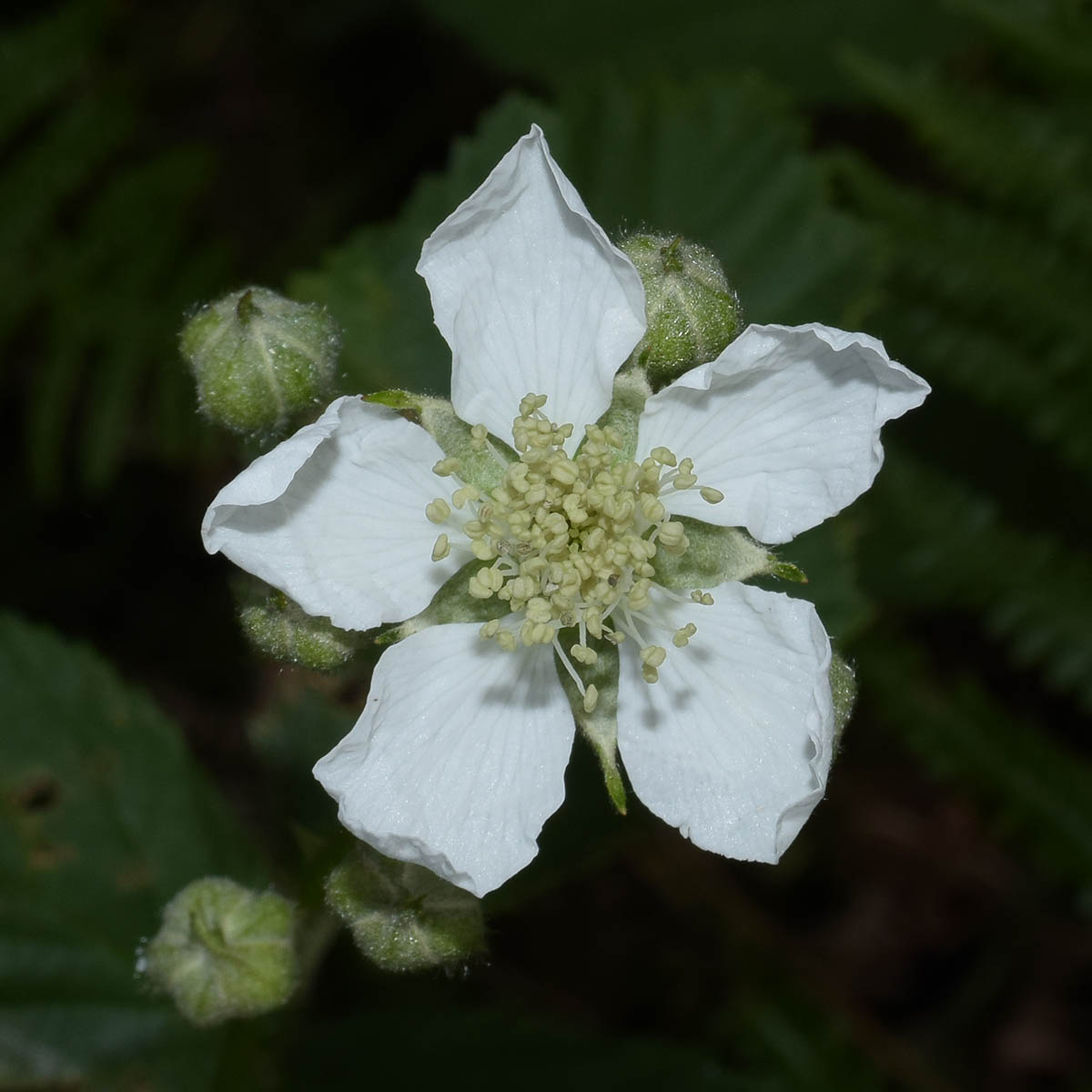
Rubus platyacanthus – Series Sylvatici
back to Alphabetical index · Taxonomic index
This is a widespread but declining species of heathlands and wood margins, which prefers damper soils. Its flowers are not particularly distinctive, having white petals with long stamens, so similar to many other species. However, combined with the finely pointed sepals, which are patent at flowering, and the leaf and stem features described below, the species can be fairly easily recognised. This is a true Sylvatican: there are no stalked glands anywhere on the plant and the leaves are not grey or white felted below.

The new stems are often tall and erect-growing. On heathland these may give away its presencee when noticed growing through bracken or scrub. The panicle is rather open, with long ascending lower branches and shorter, slender, upper ones bearing a loose head of flowers. The rachis is slightly flexuose, usually green, pubescent, with numerous patent yellow prickles, similar but smaller than those on the stem.


Flowers are c.2.5cm across with pure white broadly elliptical petals, 13 x 8mm or smaller. Styles are pale, whitish yellow; stamens are much longer than the styles; carpels glabrous, receptacle hairy. Sepals are moderatly thickly pubescent (some have shiny green showing through), indistinctly white-edged, usually with long, fine points; patent at flowering giving a star-like appearance to the flower.



The terminal leaflet is ovate to broadly elliptical with a poorly differentiated apex. The margins are irregularly sharply toothed. There are often only three leaflets, or sometimes three with two fused basal ones, or five separate leaflets.


The leaf underside is pubescent at first, becoming thinly hairy or nearly glabrous, pale green in colour.

Stems often grow completely erect and are usually bright yellowish green (becoming a little brownish in full sun). They are sparsely hairy but well developed ones are almost glabrous and shining and have striking pale yellow prickles which are patent to slightly declining; some also slightly curve upwards at the tip. They are somewhat flattened (laterally) as the scientific name implies. The pale green striations on the stem seem to be more noticeable on this species than on most other brambles.




